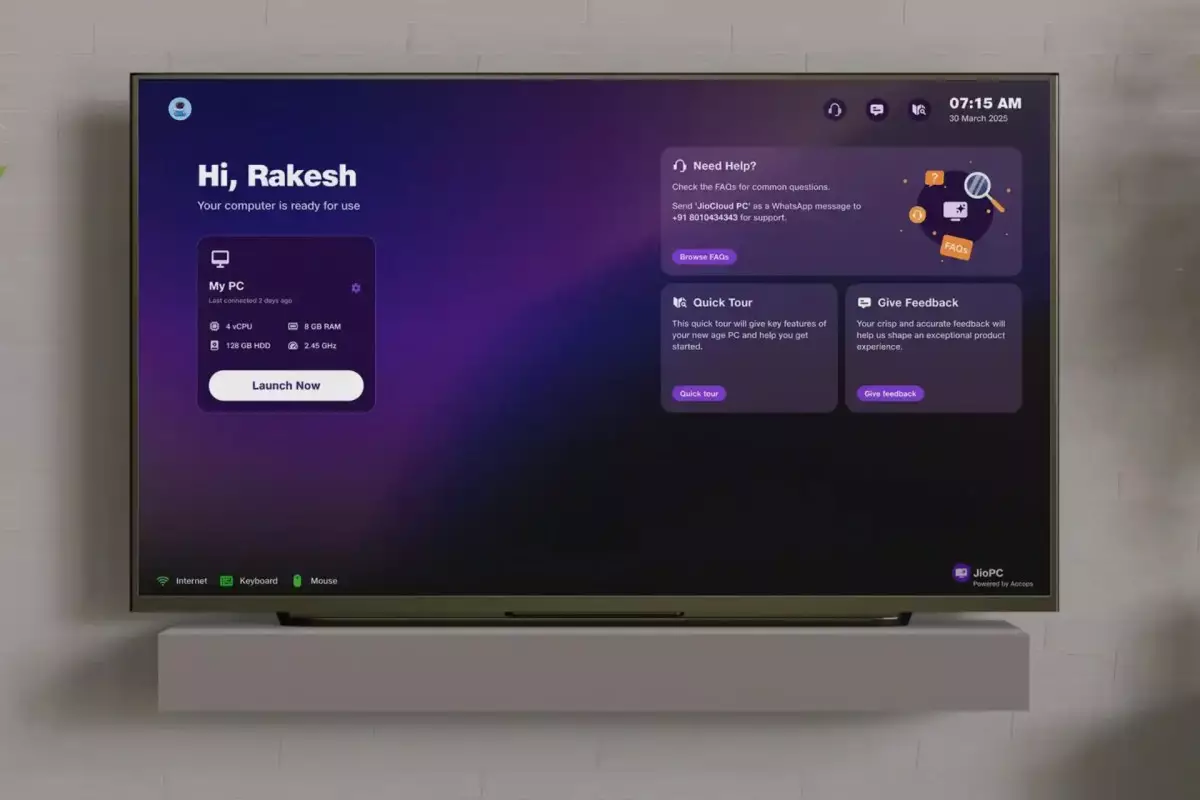The launch of JioPC by Jio Platforms marks a pivotal moment in India’s ongoing digital revolution. This initiative isn’t just an incremental update; it’s a strategic move with the potential to fundamentally alter how millions of Indians interact with technology. By offering a cloud-based PC experience directly through set-top boxes, Reliance Industries demonstrates a visionary approach, aiming to empower a nation where the digital divide remains a significant challenge.
What makes this venture compelling isn’t merely the technology—it’s the intent behind it. Mukesh Ambani’s vision to convert ordinary TVs into full-fledged computers hints at an ambition to democratize access to productivity tools, bridging the gap between urban affluence and rural impoverishment. With a country boasting over 488 million TV users but only 15% owning traditional PCs, the scope for impact is immense. Yet, the real question is whether JioPC can navigate India’s complex socio-economic landscape and turn this vision into reality.
Bridging the Digital Divide or Riding a Fad?
The core promise of JioPC is its potential to turn a ubiquitous device— the TV— into a gateway for digital productivity. This approach is inspired, especially considering the declining traditional pay-TV market, which reflects shifting consumer preferences towards internet-based content. However, turning a set-top box into a viable computer substitute is no small feat; user adoption hinges on more than just the infrastructure.
Reliance’s strategy relies heavily on the free trial phase and a waitlist, a cautious approach that facilitates gradual onboarding. But the limitations innate to the service—lack of peripherals like cameras and printers—highlight the underprepared state of such innovative solutions. For many users, especially in rural or underserved areas, the absence of peripherals and digital literacy may diminish the perceived value of JioPC. Technology alone cannot bridge socio-economic gaps; it must be complemented by education, infrastructure improvements, and reliable internet connectivity.
Another crucial aspect is the human factor. The idea of convincing an average Indian household that their TV, a device predominantly used for entertainment, can double as a productivity workspace requires significant behavioral change. It’s a transition not just technical but cultural, requiring a redefinition of what a ‘desktop’ means in the Indian context.
Market Realities and Growth Potential
India’s PC market, although witnessing steady growth of over 8% year-over-year, remains relatively underpenetrated. Low disposable incomes and a primary reliance on smartphones as computing devices create hurdles for widespread adoption. JioPC’s success is therefore intertwined with its ability to tap into the vast rural and lower-income segments, which are traditionally overlooked by high-end technological solutions.
Experts like Tarun Pathak highlight that reaching these segments necessitates strategic partnerships—particularly with app developers and productivity service providers like Microsoft. This is where Ambani’s enterprise truly faces a litmus test: can Jio leverage its large user base and provide enough compelling content and applications to make the transition from entertainment to productivity seamless? Without a robust ecosystem of apps and reliable internet, the service risks being perceived as a novelty rather than a necessity.
Moreover, the shifting dynamics of the pay-TV market signify a crucial turning point. As traditional DTH service subscriptions decline, much of that user base could be coaxed into adopting more internet-centric solutions like JioPC, provided the technical and educational barriers are addressed adequately. The potential is immense, but execution remains pivotal.
Challenges and Opportunities Ahead
Although the concept of a cloud-based PC via set-top box is innovative, its success hinges on overcoming several significant hurdles. Infrastructure gaps, especially in rural India, threaten to dampen adoption. Connectivity issues and limited digital literacy may prevent many from realizing the full benefits of JioPC.
Yet, the opportunity is equally promising. For Jio, this isn’t merely about a single product launch—it’s about establishing a digital ecosystem that can redefine how millions access information, education, and opportunities. If the company manages to scale beyond early adopters, partner effectively with app developers, and promote digital literacy, Jio could spearhead a new era of everyday computing for India.
The initiative also signals a shift in how consumers might perceive their homes’ electronic devices—no longer just entertainment centers, but gateways to broader horizons. This blend of affordability, accessibility, and innovation could unlock unprecedented growth in digital adoption, provided Reliance is willing to invest in the necessary infrastructure and consumer education.
In essence, Jio’s venture into cloud computing via set-top boxes is a manifestation of bold ambition. It’s a gamble that, if executed strategically, could catalyze the next wave of digital inclusion in India—a country where connectivity isn’t just a luxury but a fundamental driver of progress.

